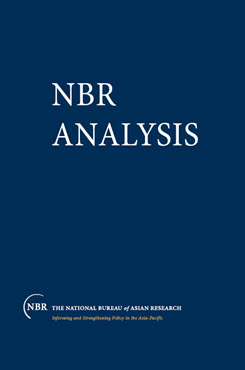King Solomon's Judgment
These essays examine U.S. relations with Burma with a look at exile communities whose aim is to restore democracy and respect for human rights; the National League for Democracy (NLD), the opposition group that won the majority of seats in the 1990 elections in Myanmar, but whom the military junta has denied power; and the junta, which seized and has held power since 1988, first as the State Law and Order Restoration Council (SLORC), and since 1997 as the State Peace and Development Council (SPDC), gain the prize for preserving the country’s unity?
If King Solomon were handing down his judgment today on the question, “Which of you, the contending and contentious parties, loves this country best?” I wonder to whom he would award Myanmar? Would it be awarded to the exile communities whose aim is to restore democracy and respect for human rights to this beautiful country? Would the prize go to the National League for Democracy (NLD), the opposition group which won the majority of seats in the 1990 elections in Myanmar, but whom the military junta has denied power? Or would the junta, which seized and has held power since 1988, first as the State Law and Order Restoration Council (SLORC), and since 1997 as the State Peace and Development Council (SPDC), gain the prize for preserving the country’s unity?
In the court of King Solomon, it will be recalled, the woman who loved the child best was prepared to surrender it to the false claimant rather than see it killed. To her, King Solomon awarded the prize, for her act of intentional self–sacrifice was proof to him that she was indeed the real mother. Among the three contending parties above, is there one who would emulate this woman in King Solomon’s court? [1] Or will all sides firmly maintain their inflexible positions? And what will be the fate of the “child”—the country, the 52 million people of Myanmar— caught in the middle? That is the question. [2]
The Tests
The discussion below takes the government’s seven–point road map as the first of the tests. Myanmar’s Asian neighbors consider the road map to be a potentially constructive solution to the political impasse. Although there are obvious shortcomings with the seven–point plan, it is nonetheless a major step toward resolution of Myanmar’s governance problems. Opponents of the government, however, have criticized it as merely a delaying tactic or a recycling of old ideas. Developments around the time of the ten–party conference in Bangkok on December 15, 2003, suggest that the government is coming to grips with the key issues— participation of the NLD and the minorities in the national convention. [3]
If there is one question on which all parties agree, it is that democracy will come to Myanmar. At issue is when and how. For those parties opposed to the SPDC, economic sanctions are the means, but the timing is left indeterminate. For the government of Myanmar, it is through the seven–point road map announced on August 30, 2003, by the…
[1] Although three “parties” there are only two protagonists—the government and the opposition. Each has various supporting groups.
[2] Ministry of Health, 2001, Health in Myanmar, Yangon: Ministry of Health, p. 2, gives the population as 51.12 million. The CIA and U.S. Census Bureau estimate is 44 million in 2002, based on the annual growth rate declining from 1.50 percent in the mid-1960s to 0.85 percent in 2002. The UN Population Division estimate is 49 million in 2002 based on 1.3 percent growth, while the Asian Development Bank estimated 52 million in 2002. U.S. demographic assumptions appear influenced by the perception that the junta is unable to sustain normal growth.
[3] Much of this section draws on Helen James, “Cooperation and Community Empowerment in Myanmar in the Context of Myanmar Agenda 21,” Journal of Asian Pacific Economic Literature, vol. 17, no. 1 (2003), pp. 1–21.


